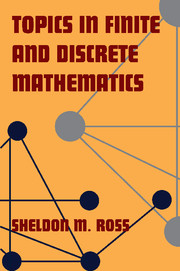9 - Statistics
Published online by Cambridge University Press: 06 July 2010
Summary
Introduction
It has become accepted that, in order to learn about something, you must first collect data. Statistics is the art of learning from data. It is concerned with the collection of data, its subsequent description, and its analysis, which often leads to the drawing of conclusions.
Frequency Tables and Graphs
A data set having a relatively small number of distinct values can be conveniently presented in a frequency table. For instance, Table 9.1 is a frequency table for a data set consisting of the starting yearly salaries (to the nearest thousand dollars) of 46 recently graduated students with a B.S. degree in computer science.
The frequency table tells us, among other things, that the lowest starting salary of $43,000 was received by four of the graduates, whereas the highest salary of $60,000 was received by a single student. The most common starting salary was $46,000, which was received by eight of the students.
Data from a frequency table can be graphically represented by plotting the distinct data values on the horizontal axis and indicating their frequencies by the heights of vertical segments. The graph is called a line graph if these segment are lines, or a bar graph if they are given added thickness. Figure 9.1 presents a bar graph for the data of Table 9.1.
When a data set has a large number of distinct values, we often divide these values into groupings, or class intervals, and then plot the number of data values falling in each class interval.
Information
- Type
- Chapter
- Information
- Topics in Finite and Discrete Mathematics , pp. 220 - 236Publisher: Cambridge University PressPrint publication year: 2000
